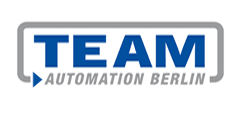Soldering processes
Together with our specialised partners, we design, plan and build manual, semi-automated and fully automated systems for the following soldering processes in accordance with the respective process and customer requirements
inductive solder
In the case of induction soldering, a secondary or high-frequency power source is connected to a secondary coil, the soldering inductor. The alternating current flowing in the inductor induces a magnetic field, which produces eddy currents in joint partners at the soldering station, which cause the heating to be solder temperature. A prerequisite for this is that the soldering components are electrically conductive. To prevent the inductor from warming up, cooling water is pumped through the hollow coil wire. The induction solder allows the transfer of large amounts of energy.
resistance solder
During resistance soldering, heat is generated by electric current in a soldering station. A conductor flown by current warms itself by its resistance. The soldering method is predominantly used for soldering parts of unequal mass, some of the smaller parts on sheets having a high thermal conductivity. The electrical resistance is formed by the soldering station, which heats up directly. A solder paste containing flux and solder achieves that the electrical resistance at the soldering point is greatest. Text by LinlFang.de
soldering
When light is emitted, short-wave infrared light is focused in the range of 1µm. The light source is arranged at a focal point of a semi-elliptical mirror, so that all the rays emanating from the light source are focused at the second focal point of the ellipse. The radiant energy is converted into heat on the surface of the solder by absorption. The radiant energy can be varied over the performance of the light source, the radiation duration and the type of focusing. In the case of light soldering, the diameter of the burn spot is 2-3 mm, depending on the optical system.
laser soldering
In laser soldering, the heat energy for melting the lot is produced by the strongly beamed and coherent light of equal laser wavelength. Of the different types of lasers (CO2, Nd: YAG or diode lasers) special laser diode lasers are suitable for laser soldering. On the one hand, they have a better absorption behavior with a wavelength between 800-1000nm, on the other hand, the performance can be adjusted significantly better over the applied voltage. This allows optimal performance profiles to be achieved for the laser solder.


